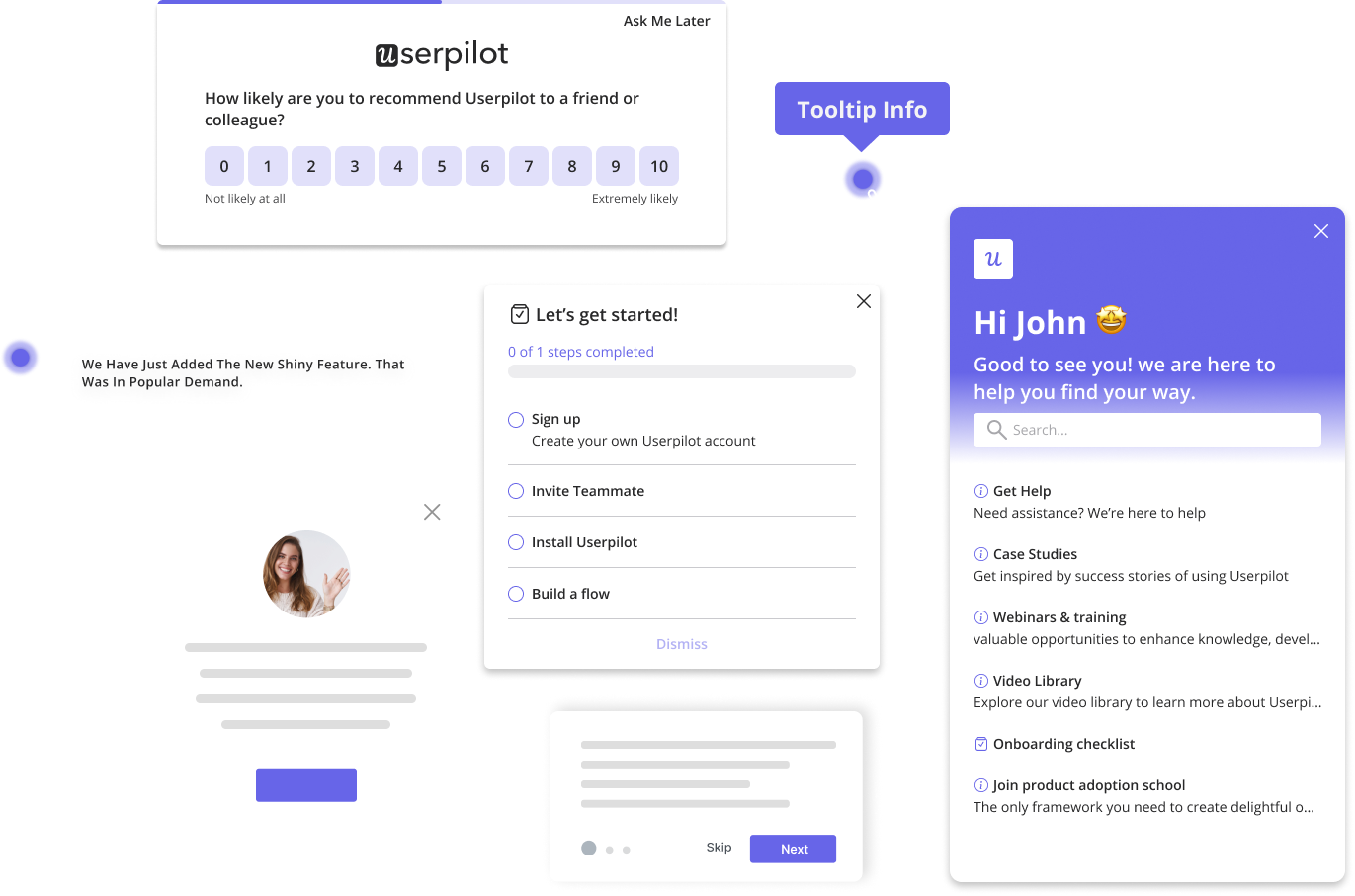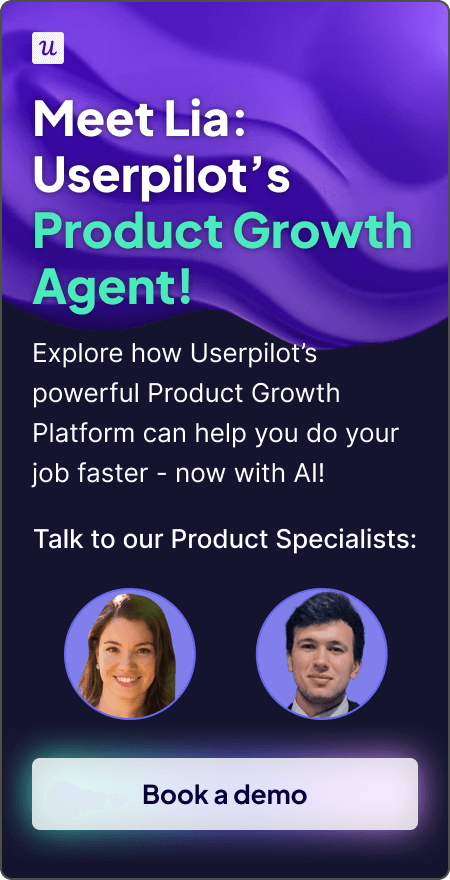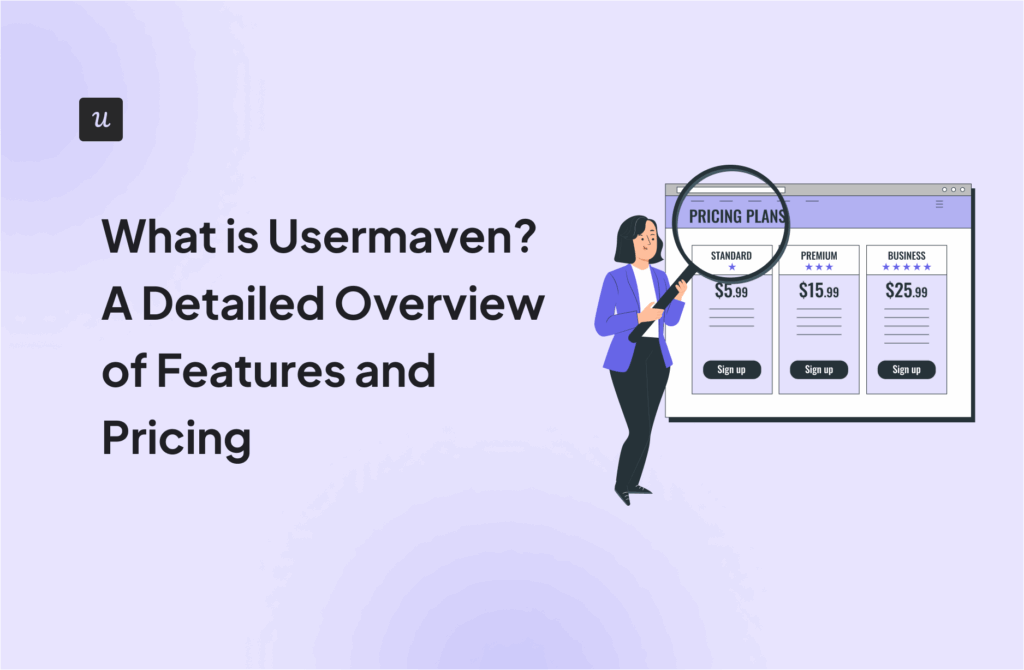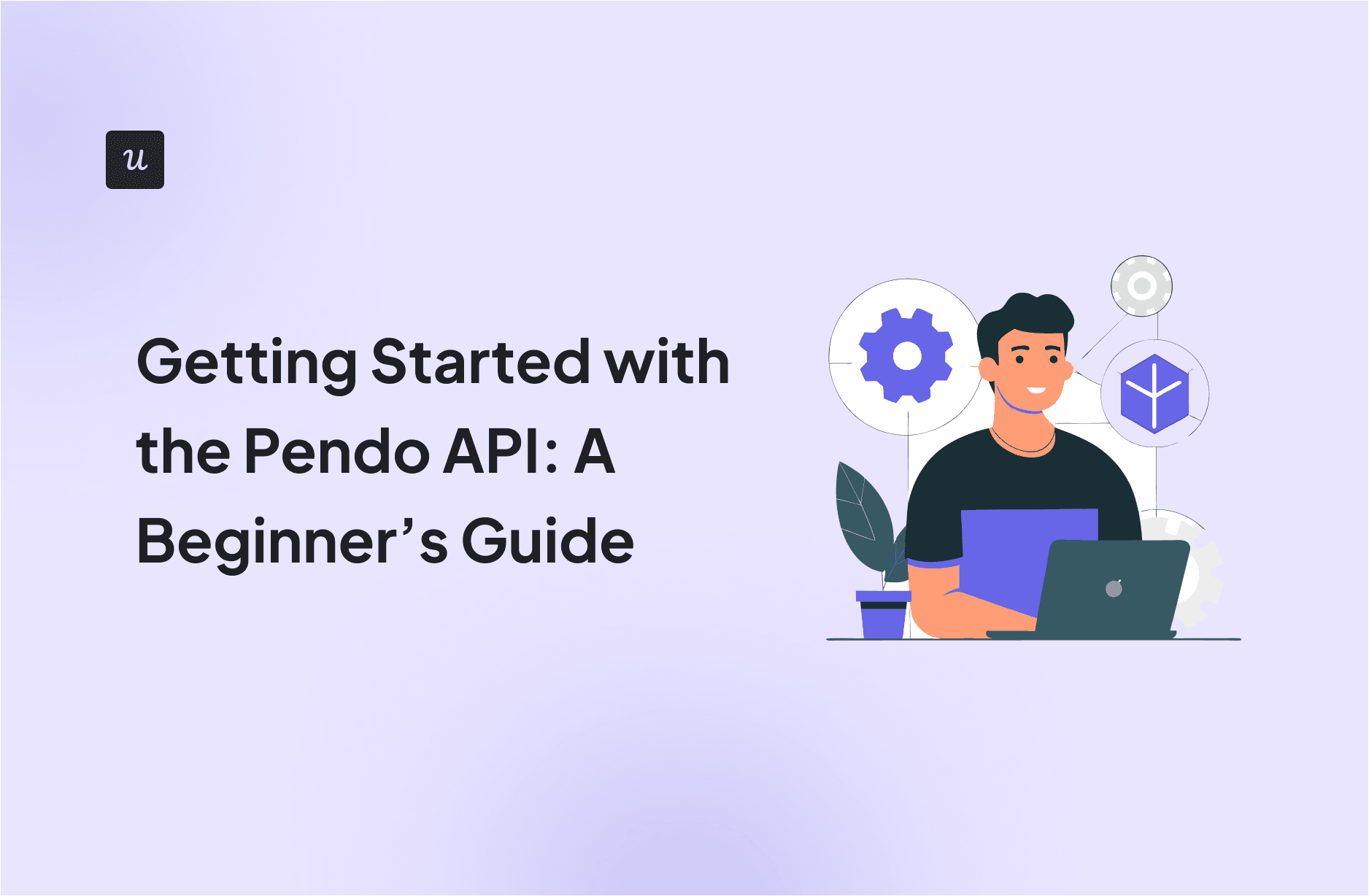
If you’ve ever tried to wrangle insights out of the Pendo API, you know it’s anything but beginner-friendly. The documentation is clunky. Rate limits are unclear. And just accessing your own product data can feel like coding in the dark.
You’re not alone because many product managers hit the same wall. You want to build a tighter feedback loop, extract behavioral data, or automate user segmentation. But Pendo’s setup slows you down before you even get to the good stuff.
In this guide, I’ll walk you through how to get started with the Pendo API, without the jargon or rabbit holes. And if you’re looking for a simpler, faster way to track product usage and trigger in-app experiences, Userpilot makes product management workflow. And without making you depend on engineers or deal with clunky APIs.
What’s your biggest challenge with the Pendo API?
Understanding your main pain point helps us see if there’s a simpler way to get the data you need.
How much engineering time do you spend managing Pendo API tasks?
Many teams find themselves bottlenecked by developer dependency for simple product management tasks.
What is your primary goal for using product data?
Whether it’s analytics or in-app guidance, your end goal determines the best tool for the job.
Get Pendo API Power, Without the Code.
Stop wrestling with complex APIs and developer dependencies. Userpilot gives you the power to track events, analyze behavior, and launch in-app experiences—all without writing a single line of code. See how you can get the insights you need in a fraction of the time.
Try Userpilot Now
See Why 1,000+ Teams Choose Userpilot
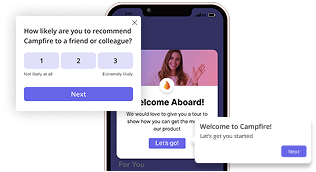
What can I access using the Pendo API?
The Pendo API gives you access to a handful of key resources, though working with them isn’t always intuitive.
Here’s what you can do once you’re set up:
- Request or update key resources like in-app guides, visitor metadata, and reports. That includes pulling data for analysis or modifying guide details programmatically instead of doing it manually in the UI.
- Send custom track events to log product interactions that aren’t tied to default browser events. For example, if you’re tracking clicks inside a mobile webview or usage inside an embedded iframe, you’ll need custom events.
- Run aggregation queries to pull and manipulate visitor data at scale; think usage trends, user segmentation, and time-based behavior summaries.
It’s enough to build solid data workflows if you have engineering support and the time to figure out the structure. But for most product management tasks, it can feel like overkill, especially if all you need is to track events and push user segments into in-app flows.
Different APIs Pendo offers
Pendo is a known player in the product adoption space, offering analytics, in-app guidance, and feedback collection. At its core, the Pendo API acts as a bridge, allowing other systems to communicate with Pendo’s platform. Pendo generally breaks its API functionality into a few key areas:
- Engage API: This is your go-to for querying core subscription data, managing things like in-app guides, user segments, and metadata. Think of it as the brain for advanced reporting and content management.
- Agent API: This one lets you control the Pendo Agent that runs in your application. It’s how developers fine-tune auto-event capture, manage text collection, or programmatically trigger guides. It offers granular control over the user experience.
- Feedback API: If you’re using Pendo’s legacy feedback features, this API helps you retrieve and manage user feedback requests programmatically.
Common use cases of the Pendo API for product managers
Integrate data for a 360-degree view
One of the biggest benefits of any robust API is the ability to extract and combine data. Pendo’s Engage API allows you to pull raw event data. While Pendo’s dashboards offer insights, sometimes you need to combine that data with other sources like your CRM or internal databases to get a complete picture of your customer journey.
The Pendo API helps bridge these gaps. For example, by extracting page view data or custom track events, you can feed it into your data warehouse for advanced customer behavior analysis. This means you can identify friction points more accurately, understand user activity patterns, and make data-driven decisions.
At Userpilot, our data sync feature is designed for this, letting you export raw event data into your infrastructure for deeper, custom analysis without needing to make individual API calls for every data point. You get full ownership and control over your data structure, which is crucial for compliance and building custom analytics dashboards.
Crafting truly personalized experiences
The Pendo API lets you dynamically identify users and update their properties.
For example, you could:
- Trigger a new feature onboarding flow only for users in a specific role who haven’t used a related feature.
- Show a targeted NPS survey to users after they complete a critical task.
- Personalize the text within a tooltip or modal with the user’s name.
This is something we do easily with Userpilot’s personalization capabilities.
Advanced tracking and automation
Beyond basic event capture, the Pendo Agent API lets you implement custom tracking for actions that might not be automatically picked up.
For instance, you might:
- Send tracked events for specific backend actions or complex user behaviors that span multiple clicks, which can then be grouped into custom events for better analysis.
- Programmatically trigger a specific in-app guide or checklist when a user hits a certain API response.
- Enable or disable debugging tools on the fly using
pendo.enableDebugging()to troubleshoot issues quickly.
What are the Pendo API limitations?
- Data processing time: Data updates hourly in the Pendo UI, with bulk calculations typically completing within 15 minutes after the hour. Segment calculations for guide targeting can take up to 5 minutes.
- Event data retention: Raw event data used for analytics is retained for a maximum of 7 years (84 months). Data older than this is not available for analytics or API queries.
- Session replay data: Session Replays are automatically deleted after 30 days, or 90 days with extended retention.
- MAU limits and sampling: If your subscription has Monthly Active User (MAU) limits, aggregate data on visitor-specific pages and reports may only reflect a random sample of visitors for a given day, potentially leading to inconsistencies.
- Impact of exceeding MAU threshold: If your MAU count exceeds your plan’s threshold, access to certain functionalities may be restricted until you upgrade to a higher plan.
Considering Alternatives for Agility and Control?
While Pendo’s API offers extensive capabilities, I’ve always found myself weighing the effort versus the outcome, especially when dealing with development resources. Building custom integrations and managing API calls often requires engineering time, which can be scarce. This is why I often look at platforms like Userpilot, which offers similar (and often more direct) ways to achieve these goals with a no-code approach.
For a product manager, getting insights and delivering experiences without constant developer involvement is a game-changer. Let’s compare a few key areas where Userpilot shines, offering the power of an API without the complexity:
- No-Code Event Tracking and Segmentation: Userpilot allows you to visually label events (clicks, text inputs, form submissions) directly in your app without writing a single line of code. This is like having your own “auto-capture” system, which instantly collects data and makes it available for segmentation and product usage analytics. No need for intricate API definitions; just point and click.
- Rich In-App Experiences, Code-Free: Instead of coding custom API calls to trigger guides, Userpilot provides a visual builder for creating product tours, flows, tooltips, checklists, and banners directly on your web or mobile app.
- Real-time data updates: With APIs, syncing data often means handling webhooks, polling, or manual refreshes. That’s extra overhead. In Userpilot, user data updates in real time as users interact with your app. Whether you’re tracking feature adoption or triggering an in-app flow, the data is fresh and instantly actionable.
- Scalable pricing: Most API-first platforms tie pricing to volume, like the number of events, API calls, or MTUs, which means the more you grow, the more you pay (sometimes unpredictably). Userpilot keeps things simpler. You get access to core features like tracking, segmentation, and in-app experiences without constantly watching usage thresholds or hidden costs creep in. That makes it easier to plan ahead and scale your product experiments without worrying about budget constraints.
In my experience, Userpilot provides a faster and more accessible way to achieve the same outcomes. And that too, without the overhead of managing a complex API.
DISCLAIMER: Userpilot strives to provide accurate information to help businesses determine the best solution for their particular needs. Due to the dynamic nature of the industry, the features offered by Userpilot and others often change over time. The statements made in this article are accurate to the best of Userpilot’s knowledge as of its publication/most recent update on September 10, 2025.

